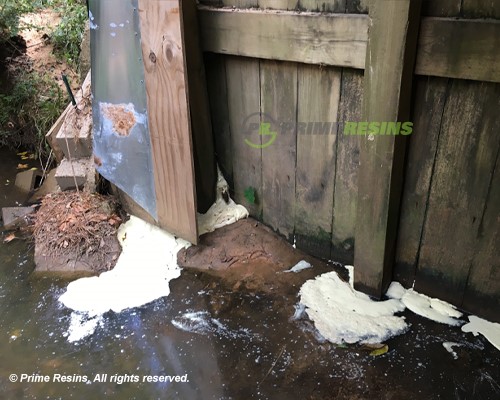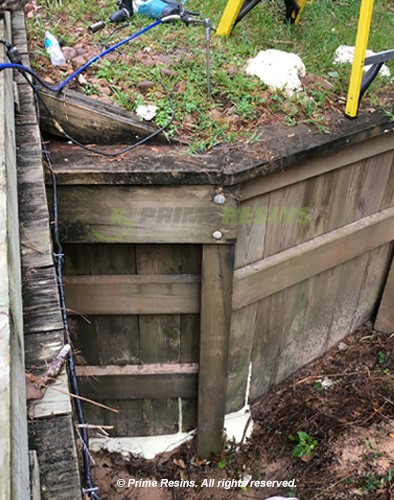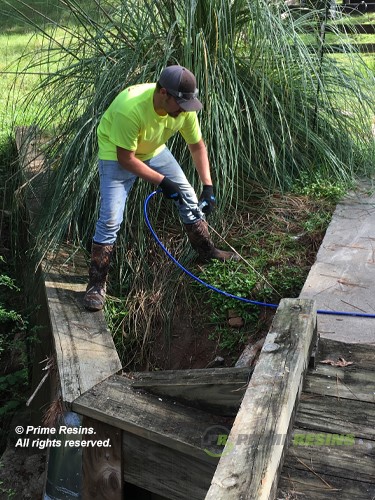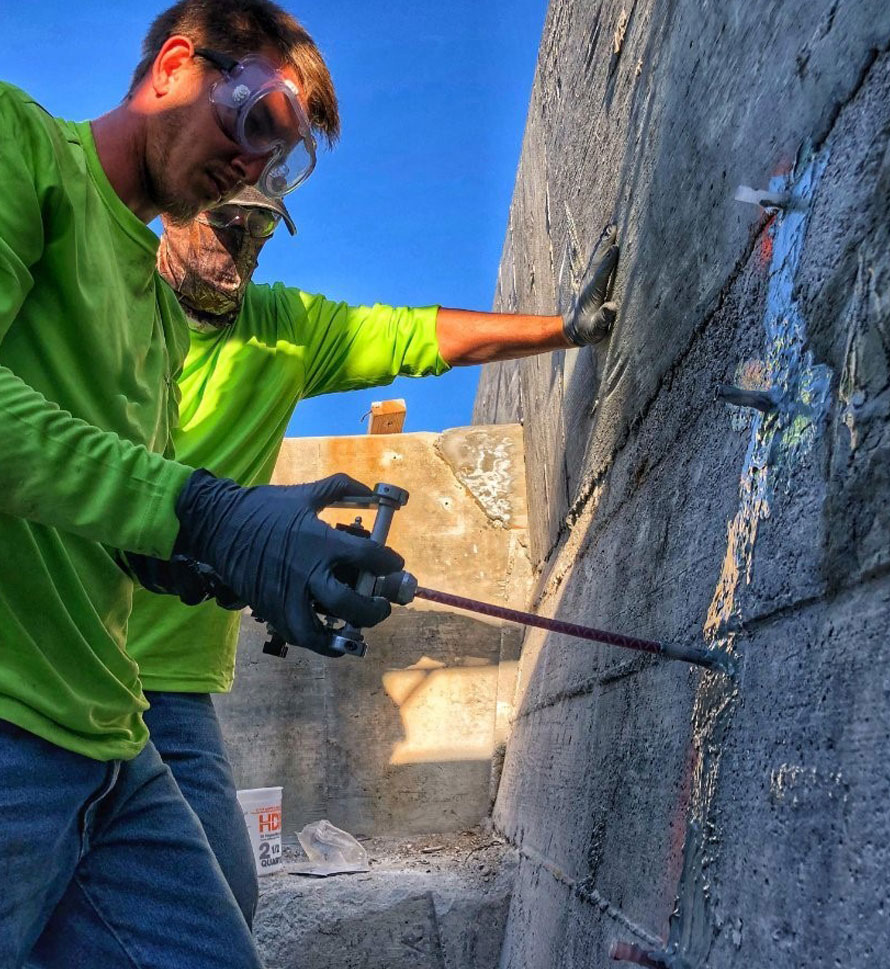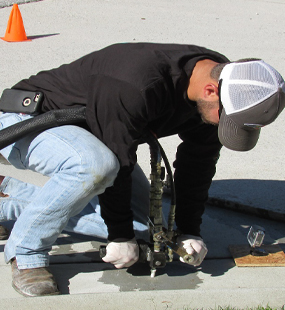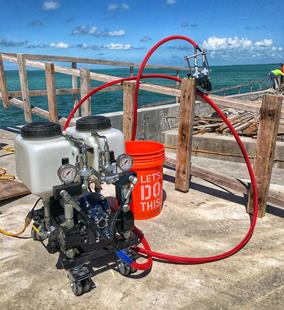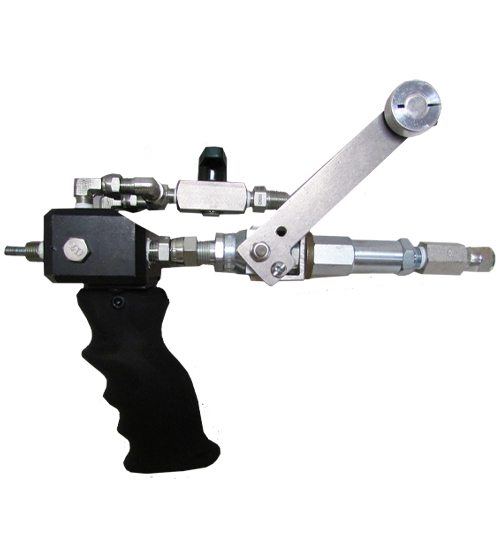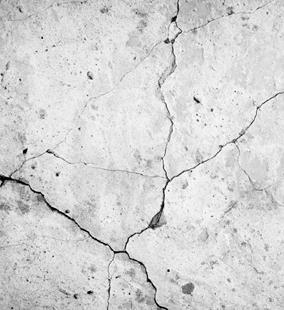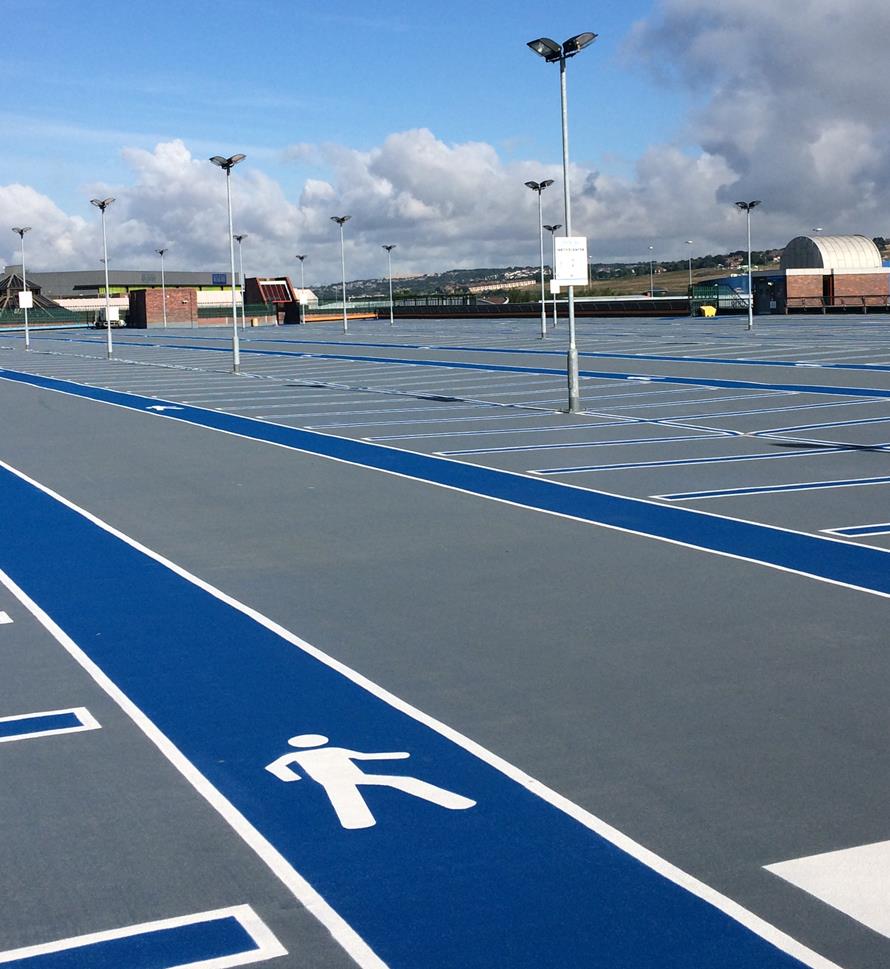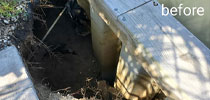
- Home
-
Solutions
-
Leak Seal
Seal leaks in concrete or masonry with crack injection and curtain grouting of our Prime Flex polyurethanes and AR acrylate resins. Prime Resins offers superior solutions for stopping leaks in every type of environment.
Read More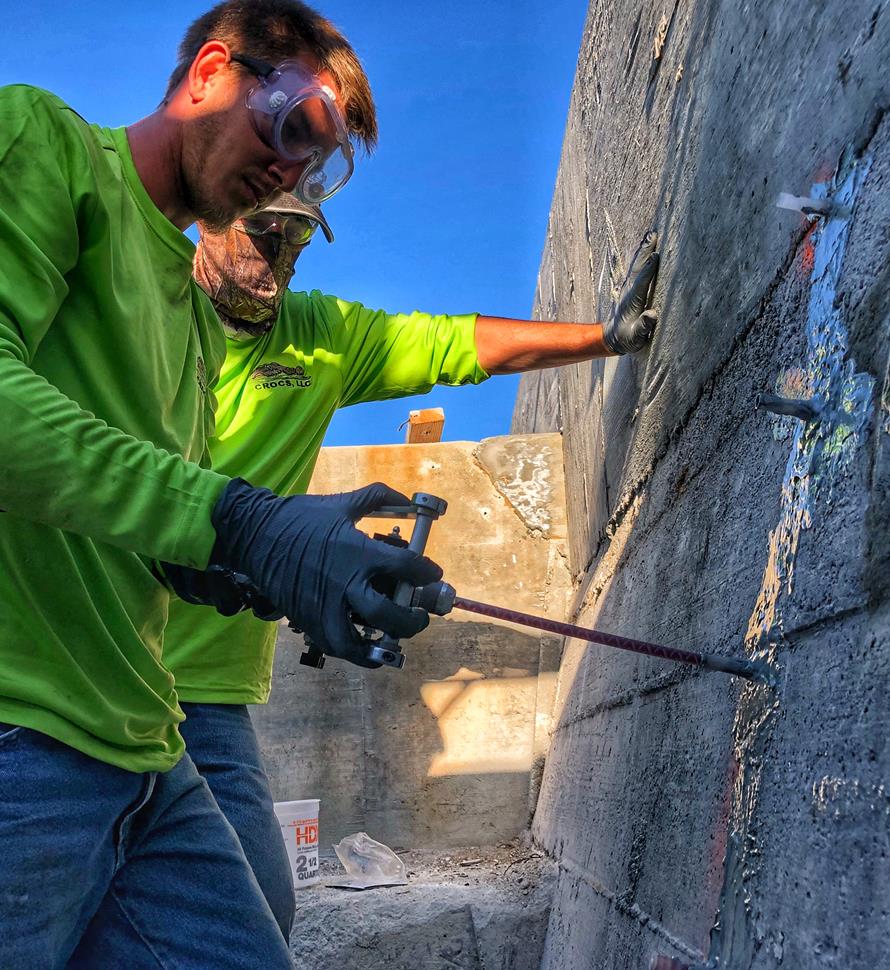
-
Soil Stabilization
Sound concrete relies on a sound substrate. Stabilize soils and fill voids with our polyurethane and acrylate foams and gels. We make chemical grouts for permeation and compaction grouting in wet and dry conditions.
Read More
-
Slab Lifting & Stabilization
Slab lifting and slab stabilization with polyurethane foams offers many advantages over traditional mudjacking. Only Precision Lift is engineered to tackle underlying issues and slab lifting with precise, dependable results.
Read More
-
Floor Repair & Joint Protection
Spalled concrete is concrete that is chipped, cracked and deteriorating. This often happens at a joint.
Read More
-
Seawall Repair
You can repair a seawall or bulkhead with Prime Resins chemical grouts: fill voids, stabilize loose soil and seal leaks at a fraction of the cost of wall replacement.
Read More
-
Structural Repair / Bonding & Anchoring
The need for crack repair in concrete structures can be caused by many different factors. Damage can occur to the concrete in situations where direct impact puts stress on one area of the structure.
Read More
-
Highway & Bridge
The geotechnical needs of DOTs and other agencies responsible for roads and bridges are vast. Issues include: Culvert repair Soil stabilization Void filling Concrete slab lifting Sinkhole remediation Slope control Slough control in tunneling
Read More
-
Waterproofing & Secondary Containment
Protecting concrete usually means shielding it from the elements of nature or from harsh manmade chemicals. But it’s not just concrete that needs such protection. Corrugated metal pipe, steel surfaces, material hoppers, rail cars and masonry all can come in contact with corrosive or abrasive materials or harsh conditions.
Read More
-
Leak Seal
-
Products
- Leak Repair
-
Soil Improvement
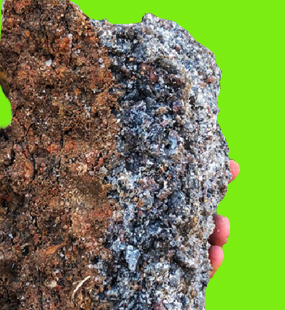
- Soil Stabilization
- Slab Lifting
- Structural Repair / Bonding & Anchoring
- Pumps
- Dispense Guns & Applicators
-
Turnkey Trailer Rig
Are you ready to hit the ground running doing concrete leveling with polyurethane foam? Prime Resins offers the industry’s best suite of products for lifting concrete as a turnkey, fully equipped trailer rig.
Read More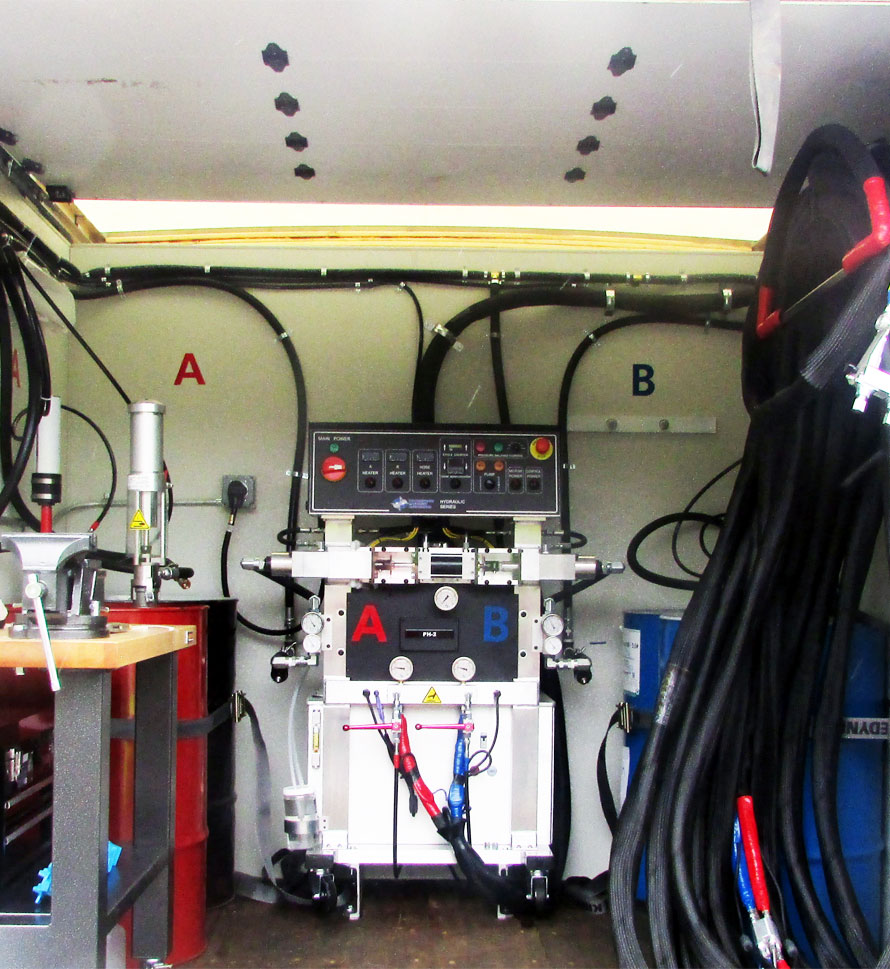
-
Accessories (General)
- 3/4" expendable drive point
- 3/8" and 3/4" soil probes
- Cartridge / Port Connectors and Mixers
- Conduit Seal Kit
- Eco Flush
- F Valve
- Flush Wand
- Grout Needle Kit
- High Pressure Control Valve
- High Pressure Mechanical Ports
- Kick Fast
- Low Pressure Plastic Ports
- PR11 TEA (used w/ PR10 ACLM)
- PR12 APSF catalyst (used w/ PR10 ACLM)
- PR17 LYTX
- Prime Kat
- Prime Plug
- Prime Solvent CGC
- Oakum
- Soil pipe jack
- Stainless Steel Grout Needle & Kit
- StainShield
- Wall Stinger Nozzle
-
Soil Grouting Accessories
- Pipe Coupler
- Pipe Coupler Ferrule
- Buttonhead Coupler - Straight
- Buttonhead Fittings
- SG 3/4" Expendable Drive Tip
- SG 3/4 Rod - 39" Base
- SG 3/4 Rod - 39" Connector
- SG 3/4 Rod - 19.5" Base
- SG 3/4 Rod - 19.5" Connector
- SG 3/4 Fitting - Pipe to Buttonhead
- SG 3/4 Fitting - Buttonhead Fitting
- IL 1/2" Drive Point
- IL 1/2" rod - 39" base
- IL 1/2" rod - 39" connector
- IL 1/2" Fitting Buttonhead
- SG 3/4" Fitting - Buttonhead Coupler
- SG 3/4" Slotted Drive Tip
- SG 3/4 Drive Head
- Modified Pipe Jack Soil Grouting
- SG 3/4 Fitting - Buttonhead Coupler
- Pagani DPM30 Penetrometer
- IL 1/2" Fitting - Buttonhead to Connector Rod
- IL 1/2" Rod to Rod Coupler Fitting
- High Pressure Flow Control Valve
- Buttonhead Coupler - 90°
- Buttonhead Clamp Kit
- DPM30 Penetrometers
- Floor & Joint Repair
- Waterproofing & Secondary Containment
- News
- Downloads
-
Tools
-
Case Studies
Prime Resins takes pride in its ability to find the right solutions to the problems facing our customers. Here are some examples of customers’ successful jobs:
Read More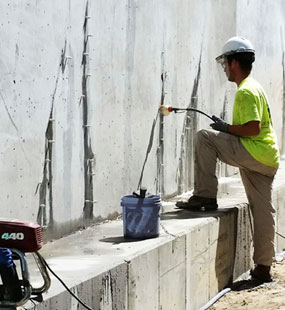
-
Prime Practices
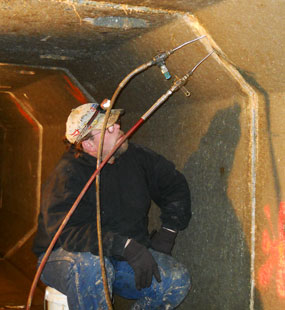
-
Videos

-
Estimating Tools & Info.

-
Why us?
The superior quality of products at a fair price, our consultative approach, and our unparalleled technical support set Prime Resins apart. Learn more about the Prime difference.
Read More
-
Product Types & Typical Uses
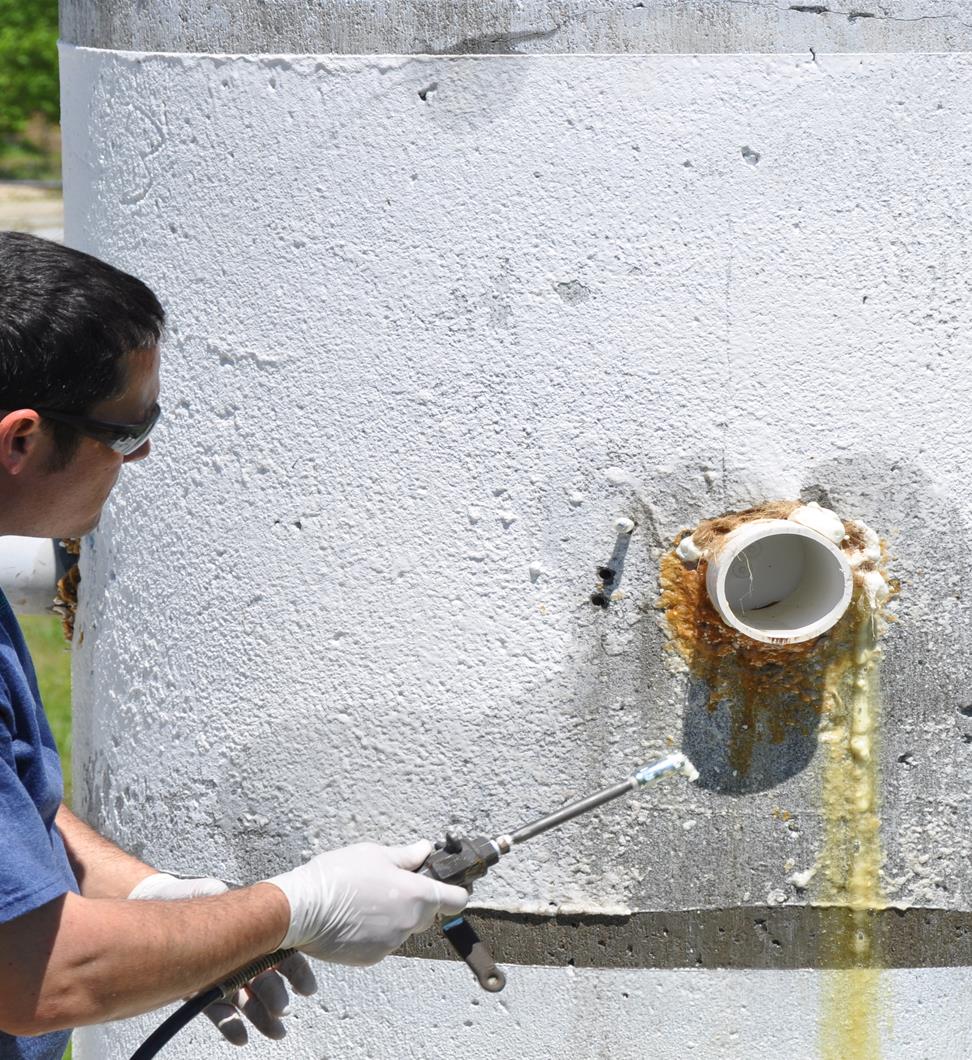
-
Looking for a contractor?
-
Certifications
-
Case Studies
- Contact
Case Studies- Seawall Repair Pages
Wooden bulkhead repair with polyurethane foam
A wooden bulkhead along a creek was in danger of failure. Huge sinkholes had formed, creating voids under the adjacent driveway. Prime Flex 920 filled the voids and Precision Lift 4.0# lifted the driveway slabs back to level.
Client: Private homeowner in Magnolia, Texas
Problem:
The homeowner has a 10-12-foot high wooden bulkhead on a creek running through his property. The bulkhead is about 10 years old. Access to the house is via a wooden bridge across the creek with concrete driveway before and after. As a result, the driveway sections are effectively bridge approach slabs.
The structure sits at a gentle curve in the creek, so the flow of water hits the bulkhead at one corner of the wall. The flow of the creek hitting that spot over time caused erosion that washed out soil under the wall. The result was a sinkhole behind the wall and adjacent the driveway. The sinkhole was 3-feet wide and 4-feet deep and further stretched underneath his driveway. For whatever reason, the diagonal corner on the other side of the bulkhead experienced similar erosion and a resulting sinkhole.
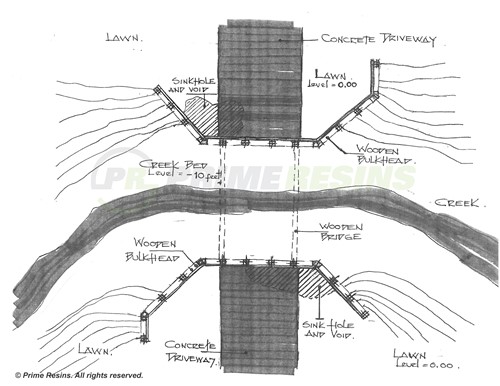
Solution:
The contractor had three jobs: stabilize the soil behind the wall and seal penetration through the bulkhead to prevent further erosion, fill the sinkholes, and fill voids beneath and then lift the driveway slabs on either side of the bridge. They opted to use structural polyurethane foams from Prime Resins to do the work.
“We chose chemical grouting because the homeowner did not want to excavate anything,” said the contractor. “With [Prime Flex] 920 you are limited only by the length of your probe. It is versatile in terms of getting it where you need to underground without excavation.
“We chose Prime Resins because you brought the knowledge and support that we needed to do this project.” Prime Resins provided on-site technical support and training for the project.
How they did it:
Step 1: The contractor, with on-site technical assistance from Prime Resins, curtain grouted behind the bulkhead with Prime Flex 920 structural polyurethane foam. Techs injected foam through a series of probes along the wall 6-10 inches back from the wall.
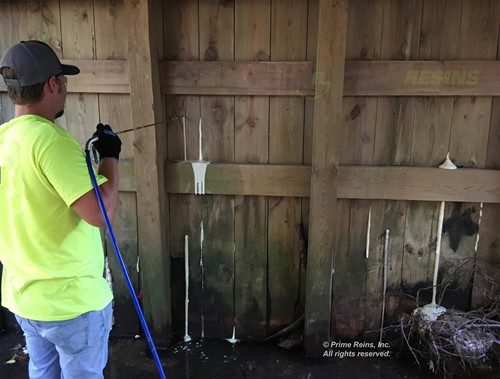
Step 2: They also injected foam through probes along the sides of the driveway and through ports in the face of the bulkhead to fill voids and permeate the loose, sandy soil. The result is a rigid, watertight mass that prevents future erosion. The foam permeated through the almost tongue-and-groove slats of the bulkhead to seal future creek intrusion.
Step 3: Next, they had to fill voids under the driveway and lift the slabs back to level with the bridge. One side had dropped 1 ½” and the other side had dropped ¾”. The crew drilled seven holes in a 2-3-foot offset pattern with one row of four holes and a row of three holes. They injected Precision Lift 4.0# structural polyurethane foam. This filled the voids and lifted both slabs back to level with the bridge.
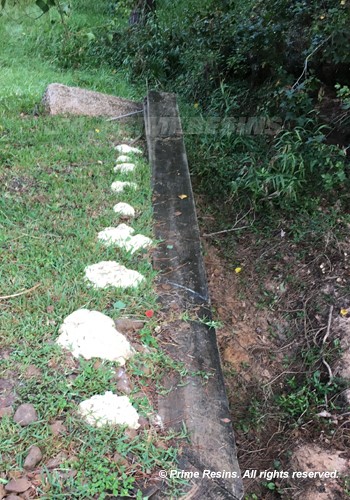
Step 4: The homeowner filled the sinkholes with backfill after the chemical grouting was completed.
Challenge:
A previous “repair” to address the failure of a support post meant they had to work around metal poles and lumps of concrete. (When the bulkhead originally began to fail, the homeowner stacked bags of concrete alongside the bulkhead and drove metal pipes through the stack.)
Alternatives:
The only real alternative was to replace the bulkhead altogether. This would have cost about $60,000. Also, that would make the house inaccessible by vehicle for the duration of the rebuild. The homeowner solved his problem for less than a quarter of the cost of replacement.
Outcome:
The job was a complete success. The work took two days to complete and the owner was able to access his home via the driveway as needed. The homeowner was happy to have his problem solved without losing vehicle access to his house for days or weeks at a time.
